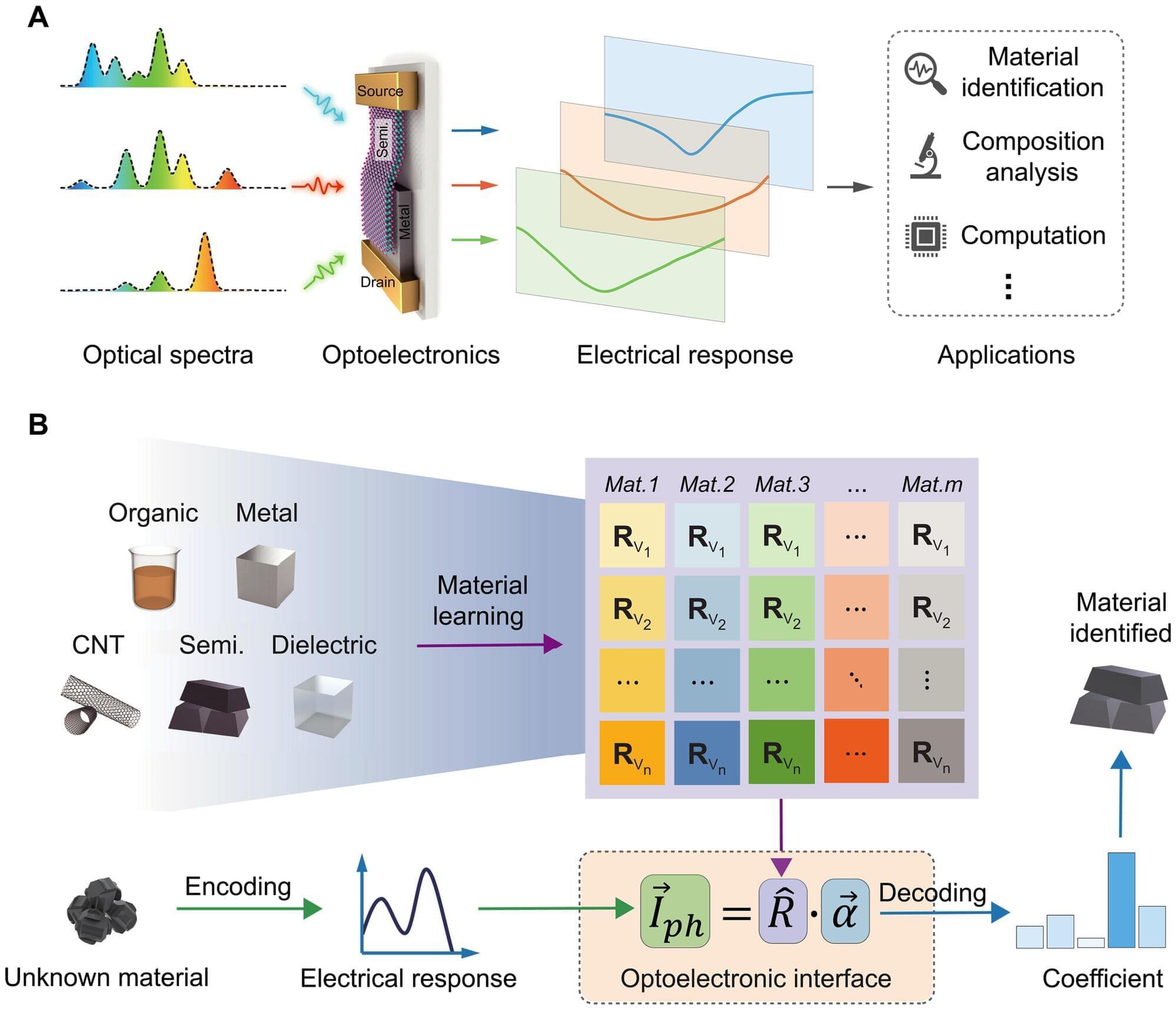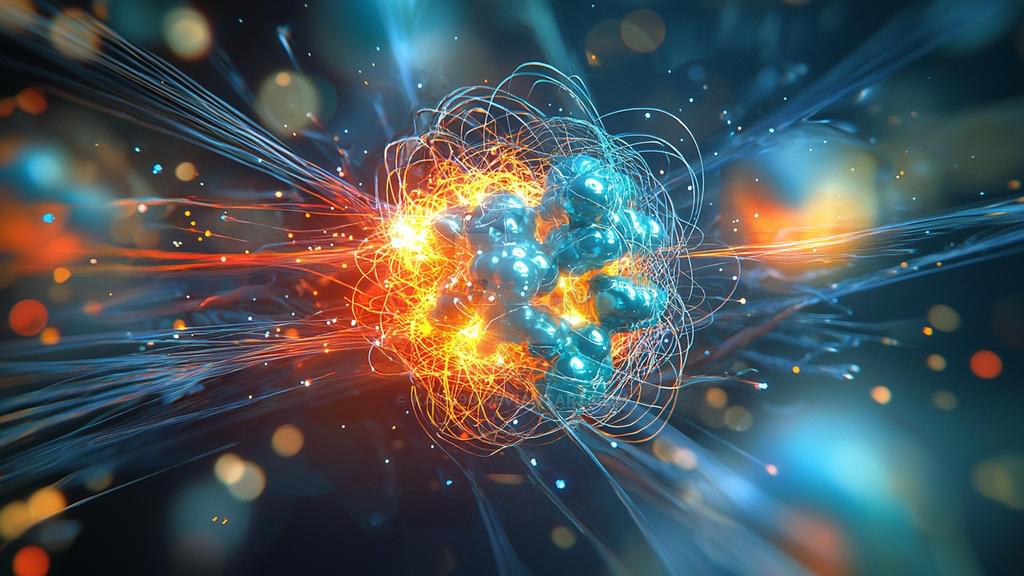The company says artificial intelligence could help surface jobs that remain hidden from typical search queries.


This unique material can behave like a fluid, flowing and deforming with minimal resistance, yet it can also instantly become rigid, acting like a solid. It’s called PAM (or Polycatenated Architected Material). Its unique structure, inspired by chain mail, features interlinked shapes forming intricate three-dimensional networks. Unlike traditional materials, which are either solid with fixed structures or granular with loose, independent particles, PAMs occupy a fascinating middle ground. When subjected to shear stress, for example, the interconnected components can slide past each other, offering little resistance, much like water or honey. However, when compressed, these same components lock together, creating a rigid structure. This transition between fluid and solid-like behavior is what makes PAMs so unique. PAMs represent a new class of matter, defying the traditional classification of materials as either solid or granular. They are a hybrid, bridging the gap between these two extremes. This dynamic behavior is achieved through the intricate design of PAMs. Researchers at Caltech create these materials using 3D printing. They begin by modeling the structures on a computer, mimicking crystal lattices but replacing the fixed particles with interconnected rings or cages. These designs are then brought to life using various materials, from polymers to metals. The resulting PAMs, often small cubes or spheres, undergo rigorous testing to understand their response to different forces. They are compressed, sheared, and twisted, revealing their unusual properties. The potential applications for PAMs are vast and varied. Their ability to absorb energy efficiently makes them ideal candidates for protective gear, such as helmets, potentially offering superior protection compared to current foam-based solutions. This same property could also be utilized in packaging and other applications requiring cushioning or stabilization. Experiments with microscale PAMs have shown that they respond to electrical charges, suggesting possibilities in biomedical devices and soft robotics. Researchers are also exploring the vast design space of PAMs, using advanced techniques like artificial intelligence to discover new configurations and functionalities. While still in its early stages, PAM research promises to revolutionize material science and engineering, opening up new possibilities for a wide range of applications.
Instagram: / hashem.alghaili.
Facebook: / sciencenaturepage.
Other channels: https://muse.io/hashemalghaili

Imagine smartphones that can diagnose diseases, detect counterfeit drugs or warn of spoiled food. Spectral sensing is a powerful technique that identifies materials by analyzing how they interact with light, revealing details far beyond what the human eye can see.
Traditionally, this technology required bulky, expensive systems confined to laboratories and industrial applications. But what if this capability could be miniaturized to fit inside a smartphone or wearable device?
Researchers at Aalto University in Finland have combined miniaturized hardware and intelligent algorithms to create a powerful tool that is compact, cost-effective, and capable of solving real-world problems in areas such as health care, food safety and autonomous driving. The research is published in the journal Science Advances.


Researchers have used quantum physics and machine learning to quickly and accurately understand a mound of data – a technique, they say, could help extract meaning from gargantuan datasets.
Their method works on groundwater monitoring, and they’re trialling it on other fields like traffic management and medical imaging.
“Machine learning and artificial intelligence is a very powerful tool to look at datasets and extract features,” Dr Muhammad Usman, a quantum scientist at CSIRO, tells Cosmos.

A new study published in PNAS Nexus reveals that large language models, which are advanced artificial intelligence systems, demonstrate a tendency to present themselves in a favorable light when taking personality tests. This “social desirability bias” leads these models to score higher on traits generally seen as positive, such as extraversion and conscientiousness, and lower on traits often viewed negatively, like neuroticism.
The language systems seem to “know” when they are being tested and then try to look better than they might otherwise appear. This bias is consistent across various models, including GPT-4, Claude 3, Llama 3, and PaLM-2, with more recent and larger models showing an even stronger inclination towards socially desirable responses.
Large language models are increasingly used to simulate human behavior in research settings. They offer a potentially cost-effective and efficient way to collect data that would otherwise require human participants. Since these models are trained on vast amounts of text data generated by humans, they can often mimic human language and behavior with surprising accuracy. Understanding the potential biases of large language models is therefore important for researchers who are using or planning to use them in their studies.


A tool developed by Keele University researchers has been shown to help detect fake news with an impressive 99% level of accuracy, offering a vital resource in combating online misinformation.
The researchers Dr. Uchenna Ani, Dr. Sangeeta Sangeeta, and Dr. Patricia Asowo-Ayobode from Keele’s School of Computer Science and Mathematics, used a number of different machine learning techniques to develop their model, which can scan news content to give a judgment of whether a news source is trustworthy and genuine or not.
The method developed by the researchers uses an “ensemble voting” technique, which combines the predictions of multiple different machine learning models to give an overall score.
Shares of Denver-based software provider Palantir rose nearly 27% on February 4 following 2024 fourth quarter results featuring faster-than-expected growth and an optimistic forecast for the current quarter and the year 2025.
Having risen 368% in the last year and sporting a price-earnings ratio of 516, according to the Wall Street Journal, do shares of Palantir have more upside? If Wall Street analysts are right, the stock is about 26% too high. However, what matters most for the future of Palantir’s stock is whether the company can keep beating expectations and raising guidance.
That could happen – especially if Palantir – which counts Peter Thiel among the company’s early investors – can harness artificial intelligence to make its defense and commercial customers better off.
Palantir fourth quarter performance and prospects.
Palantir stock rose to a record after reporting stronger-than-expected fourth-quarter results and guidance driven by AI, noted CNBC. The company’s commercial revenue increased 64% in the quarter while U.S. government sales rose 45%. Momentum at Palantir is unlike anything that has come before, CEO Alex Karp said.
Here are the key numbers:
